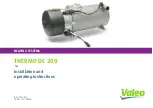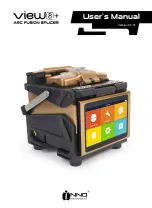
PAGE 14
9.5
Judge the good weld bead
When the trick of establishing and holding an arc has been learned, the next step is learning how to run a
good bead. The first attempts in practice will probably fall short of acceptable weld beads. Too long of an arc
will be held or the travel speed will vary from slow to fast (see following)
A. A. Weld speed is too fast.
B. B. Weld speed is too slow.
C. C. Arc is too long.
D. D. Ideal weld.
A solid weld bead requires that the electrode be moved slowly and steadily along the weld seam. Moving the
electrode rapidly or erratically will prevent proper fusion or create a lumpy, uneven bead.
ELECTRIC SHOCK CAN KILL! To prevent ELECTRIC SHOCK, do not perform any welding while
standing, kneeling, or lying directly on the grounded workpiece.
9.6
Finish the bead
As the coating on the outside of the electrode burns off, it forms an envelope of protective gases around the
weld. This prevents air from reaching the molten metal and creating an undesirable chemical reaction. The
burning coating, however, forms slag. The slag formation appears as an accumulation of dirty metal scale on
the finished weld. Slag should be removed by using a chipping hammer.
PEENING THE SLAG FROM A WELD JOINT CAUSES SMALL CHIPS OF METAL TO FLY
THROUGH THE AIR! Metallic chips flying through the air can cause eye injury or injury to other parts
of the head, hands or exposed portions of the body. Wear goggles or safety glasses with side shields
and protect the hands and other exposed parts of the body with protective garments, or if possible,
work with a shield between the body and the work piece.
The intense heat produced at the arc sets up strains in the metal joined by welding. Peening the weld not only
removes the scale left behind in the welding but relieves the internal strains developed by the heating and
cooling process.
MAINTENANCE
•
Maintain your welder.
Keep the welder
in good repair by adopting a program of conscientious repair and
maintenance. Have necessary repairs made by qualified service personnel.
•
Periodically clean dust, dirt, grease, etc. from your welder.
•
Every six months, or as necessary, remove the cover panel from the welder and air-blow any dust and
dirt that may have accumulated inside the welder.
•
Replace power cord, ground cable, ground clamp, or electrode assembly when damaged.


































